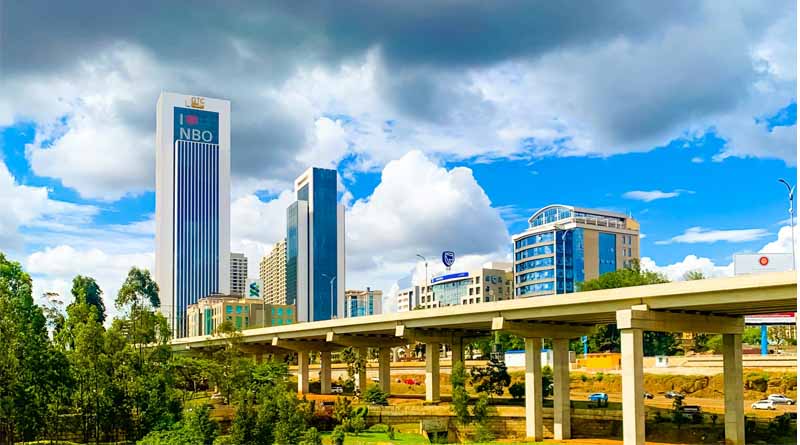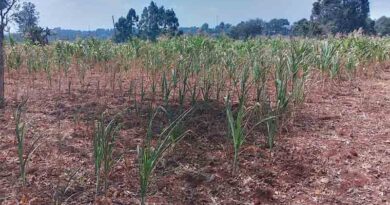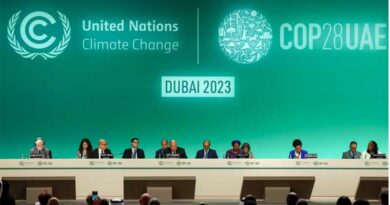Climate Change: Africa’s Megacities Threatened by Heat, Floods and Disease
02 May 2024, Africa: Between 3.3 billion and 3.6 billion people currently live in cities that are highly vulnerable to climate change. Floods pose one of the highest acute risks for climate-related death. It’s predicted that they will cause 8.5 million deaths by 2050.
Droughts, indirectly linked to extreme heat, are also among the highest causes of mortality worldwide. They may cause 3.2 million deaths by 2050.
Health problems are also triggered indirectly through food-borne and vector-borne diseases, non-communicable illnesses, displacement, and mental health stressors. A growing number of people suffer from waterborne diseases such as cholera and vector-borne diseases like malaria and dengue fever. There are up to 300 million vector-borne disease cases per year.
Climate change intensifies air pollution through fossil fuel combustion. Over 5 million deaths per year are currently caused by fossil fuel pollution. Food and water insecurity from climate-induced disruptions to agricultural production and water sources will worsen malnutrition and related illnesses in many regions of Africa, where at least 86 million people depend on natural and non-processed food resources (food that is sourced from forests or farms rather than highly industrialized food) for a significant part of their diet.
What have African cities done to adapt to the changing climate?
In our book on cities and climate change, we call for policies that compel people living in cities to minimize the resources they consume. This would reduce the emission of greenhouse gases.
For example, the city administration in Nairobi, Kenya, has created incentives for installing solar panels on buildings and public facilities. This reduces reliance on fossil fuels.
Nairobi has also expanded and improved its public transport system, including bus rapid transit corridors and commuter rail services, as have Lagos, Accra, and Johannesburg. This reduces congestion, air pollution, and emissions from private vehicles. Addis Ababa has started reforestation programs and green infrastructure development to store carbon.
Cape Town in South Africa is one of the only African cities with a climate action plan with city-level targets to reduce emissions. It has implemented water conservation measures that can be a model for other cities.
Some West African cities in the Sahel region are upgrading infrastructure to make it more resilient to climate shocks. They are turning to climate-health datasets, which provide regular updates on the warming climate, to set up early warning systems that forecast heat waves and anticipate their health effects. Cities like Accra in Ghana have set up floodplain management strategies to minimize flood damage.
Cities can adapt by creating new zoning regulations, restoring wetlands to protect against floods, and planning green infrastructure. Examples are Senegal’s seawalls in St Louis and breakwaters and sand dunes in Dakar. These reduce the risk of flooding and erosion along its coastline. Another example is Accra, which is preparing for drought by setting up water conservation measures and promoting rainwater harvesting.
How much will it cost for African cities to adapt to climate change?
The International Federation of Red Cross and Red Crescent Societies estimates that the cost of doing nothing about the climate crisis will grow from between 3.5 billion dollars and 12 billion dollars today to 20 billion dollars per year by 2030. The United Nations says that for every dollar invested in making infrastructure resilient to climate, six dollars can be saved.
Climate finance is needed to pay for adaptation measures in African cities. This would enable national and local governments to fund infrastructure upgrades, disaster response, public health initiatives, and climate change research and monitoring. Adaptation will save lives and money – an investment of 280 billion dollars by 2050 in adaptation measures could generate 1.1 trillion dollars in benefits for cities in Ethiopia, Kenya, and South Africa and create 210,000 more new jobs than the same investment in fossil fuels would.
What can people do to help?
Sustainable lifestyle choices, energy conservation, and community resilience-building initiatives can help. For example, people can set up rooftop gardens on city buildings. These increase the urban green space, improve mental health, reduce urban heat island effects, improve air quality, and provide habitats for pollinators and wildlife. These roofs sequester carbon dioxide, reduce the energy needed to cool buildings, and absorb and retain rainwater. They provide a feeling of belonging for communities and a sense of empowerment for taking part in climate action.
Community actions must be combined with larger-scale initiatives supported by local governments.
In African cities, the health impacts of climate change demand urgent attention. From rising temperatures to increased air pollution, urban centers are frontline battlegrounds. Governments must take decisive action. They must invest in green infrastructure, promote clean energy, and strengthen healthcare systems to safeguard people and the planet.
Also Read: Agri-Business Summit & Agri Awards 6th Edition Held in Hyderabad
(For Latest Agriculture News & Updates, follow Krishak Jagat on Google News)















